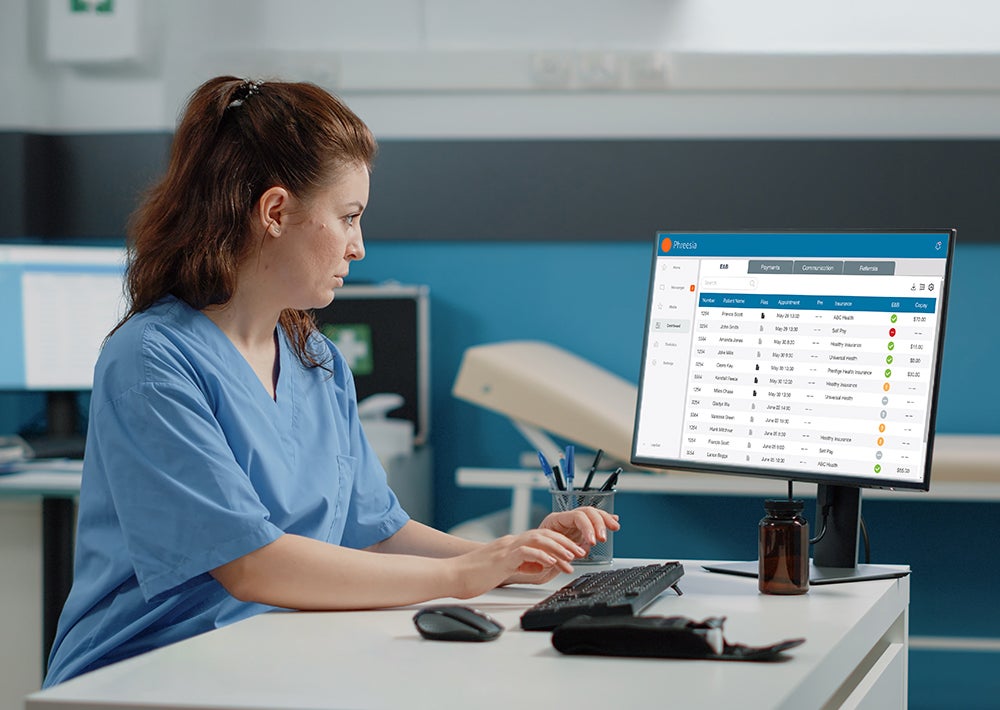In April, we collaborated with researchers from Harvard University and the Commonwealth Fund to analyze data from Phreesia’s network and present a snapshot of what’s happening in ambulatory care. Our goal was to bring attention to the critical role ambulatory care plays in the national COVID-19 effort when much of the focus was on hospitals, and to highlight troubling trends—most notably a dramatic drop in visit volume—that could put the delivery of critical healthcare to patients at risk. Since April, we have published three follow-up reports tracking the impact of the pandemic on ambulatory care providers.
In our most recent report, published today, we see striking evidence that even with a massive increase in COVID-19 cases across the country, practices have been able to continue delivering care without the mass visit cancellations and closures that took place in April. It’s not an entirely rosy picture —10-15% fewer visits could put some practices out of business. This, in turn, has worrisome implications for access to care. At the same time, the data show encouraging signs of practices’ resiliency and flexibility.
How have practices adapted to meet the current moment?
In April, we saw and reported on the increase of telemedicine use across our network. Although the rapid adoption of telemedicine was remarkable, it wasn’t sufficient to close the gap in missed visits.
Since April, telemedicine use has plateaued around 7% of pre-COVID visit volume, representing a more than 70-fold increase in telemedicine use relative to levels observed prior to the pandemic. But that is not the only adaptation practices have made to continue to deliver care during this crisis. We have seen multiple additional adaptations and a continuous cycle of change and optimization. Many of these focus on providing in-person care safely, including:
- Universal masking for patients and providers, adoption of additional PPE where needed
- Universal pre-visit digital screening of all patients in advance of visits and virtual triage of patients to the appropriate sites of care
- Virtual or alternative waiting rooms (using patients’ cars and other alternative ways of limiting exposure)
- Mobile and digital registration, allowing patients to complete intake tasks on their own devices outside of the physical practice
- Spacing out appointments, designated sick and well entrances, locations or hours
- Regular communication with patients to set expectations and introduce new protocols
- Targeted messaging to vulnerable population to reduce delays in care
- Telemedicine and remote-care monitoring
One practice in a hot-spot state ramped up telemedicine in April, dialed it down in May and June and then quickly dialed it back up as infections rose in their community. Having built a switch, they were able to nimbly turn it on and off.
Many groups have adopted entirely contactless workflows and virtual waiting rooms, keeping patients in cars and messaging them instructions via text to go directly to the exam room when the staff were ready. These consumer-friendly wayfinding services of concierge type practices were suddenly widely in use.
A large health system used digital screening and virtual triage to route patients to a nurse triage line as cases soared and then could flip a switch to re-route symptomatic patients back to primary care when sites were prepared to handle sick patients.
The speed of change has been breathtaking. Our client partners are testing, deploying and rapidly iterating on and demanding novel workflows at an unprecedented pace. Technology can only innovate when it has a committed user base. Gone is the stereotype of the provider unwilling to change. Financial survival is a driver, as is the safety of patients and staff. The mission to continue to deliver care to patients under all circumstances is palpable across our practices, specialties and groups large and small.
The role of ambulatory care will continue to be critical when a vaccine becomes available.
Tom Frieden, former director of the U.S. Centers for Disease Control and Prevention, recently cited three critical components a COVID-19 vaccine will need to be successful: It must be effective, safe and patients have to be willing to take it. Ambulatory care is where patients have always received the majority of vaccines and will likely be where this vaccine is delivered. These providers have the local network of trusted relationships that will be one of the key factors determining whether and when patients take the vaccine.
We continue to hope that sharing our data draws attention the unique challenges and experiences faced by ambulatory care providers during this pandemic and beyond.
David Linetsky, Senior Vice President, Life Sciences; and Hilary Hatch, PhD, Clinical Psychologist, Vice President, Clinical Engagement





